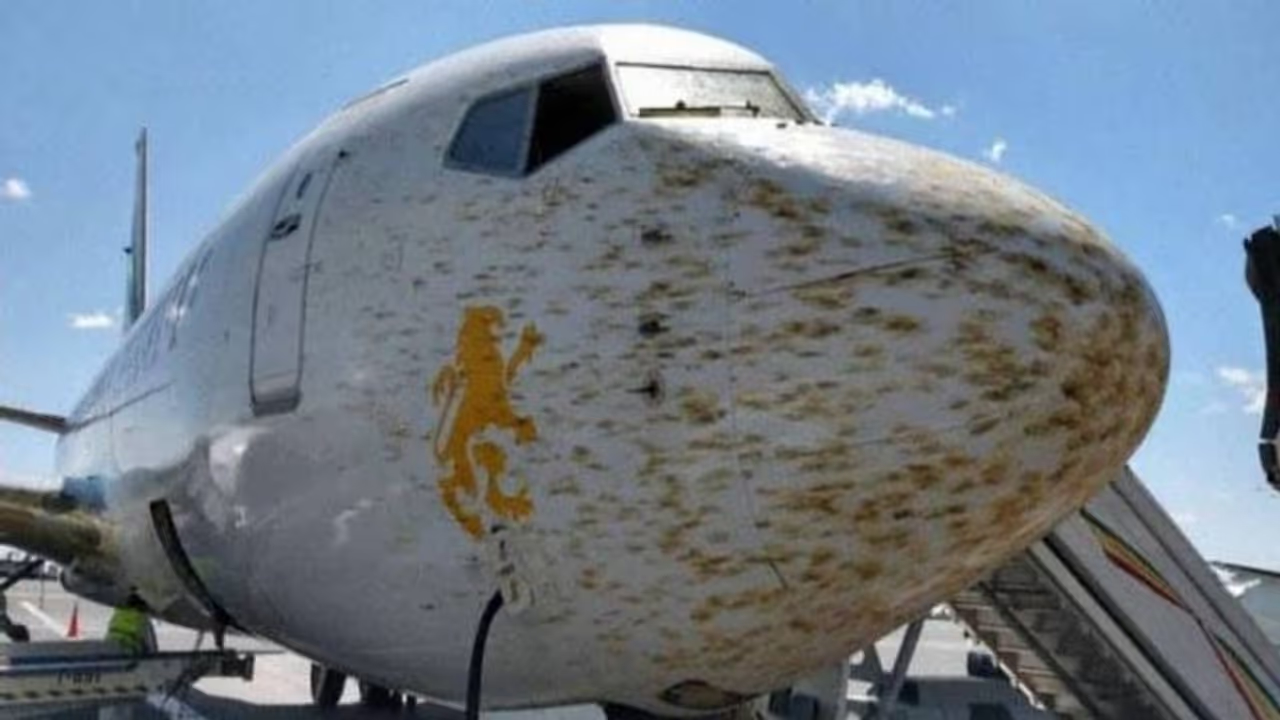Locust swarms are not only dangerous for aircraft in flight but also when it is parked. We take a look at the measures that need to be taken before it hits us in the face.
A massive locust swarm, called tiddi dal in India, hit the city of Jaipur on Monday, 25 May 2020. Urban residents panicked as if it was the “last year for humankind”. In January this year, an Ethiopian Airlines jet was forced to make an emergency landing after it flew into a swarm of locusts that were smeared across the windshield. Many aviators have tales to tell about what they went through when flying through a locust swarm.

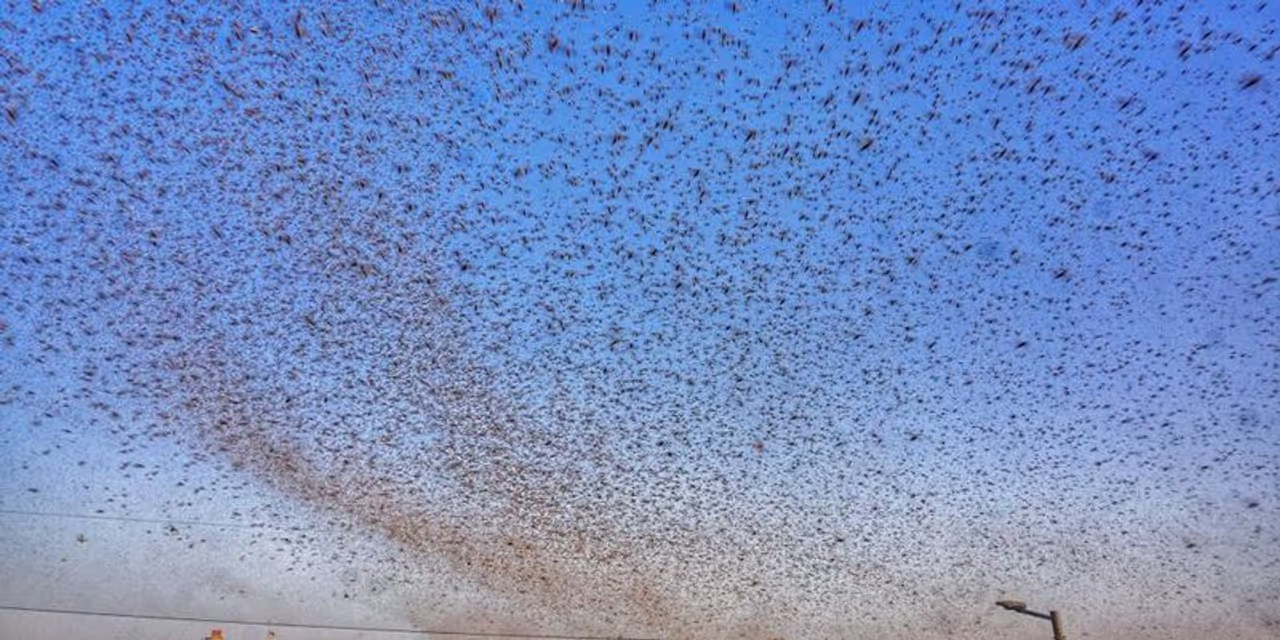
Locusts Swarm Jaipur Picture Credit: Getty Images
Also read: The southwest monsoon has made an onset over Kerala
What is Locust
Locusts are a collection of certain species of short-horned grasshoppers that have a swarming phase. These insects are usually solitary, but under certain circumstances they become more abundant and change their behaviour and habits, becoming gregarious. These grasshoppers are normally innocuous, their numbers are low, and they do not pose a major threat to agriculture. However, under some conditions of drought followed by rapid vegetation growth, serotonin in their brains triggers a dramatic set of changes. They start to breed abundantly, become gregarious and nomadic (migratory) when their populations become dense enough. They form bands of wingless nymphs which later become swarms of winged adults. The swarms move around and rapidly strip fields and cause damage to crops. The adults are powerful fliers; they can travel great distances, consuming most of the green vegetation wherever the swarm settles. Interestingly, locusts are large insects and are also edible and considered a delicacy in many countries. Locusts are mentioned in Egyptian carvings, in the Mahabharata, the Bible and the Quran. Swarms have devastated crops, contributed to famines and human migrations.
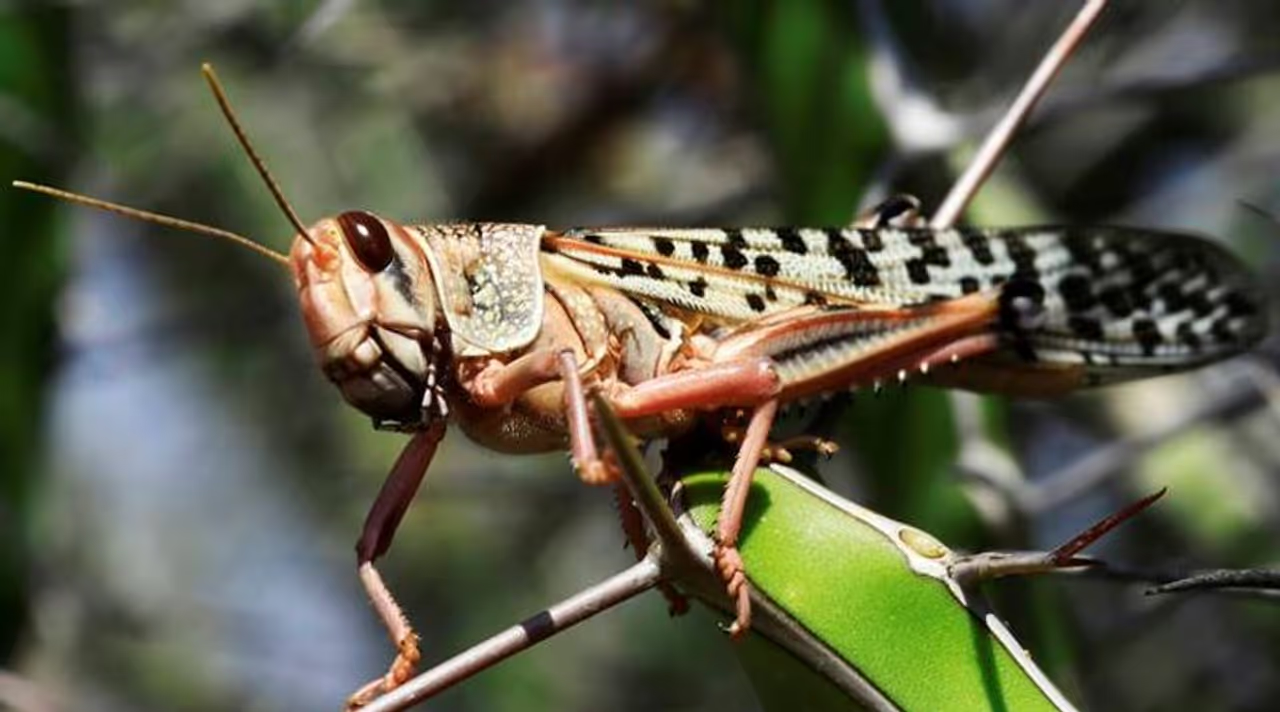
Locust. Photo Credit: REUTERS/Feisal Omar/File Photo
Early Detection Possible
More recently, changes in agricultural practices and better surveillance of locations where swarms tend to originate, have meant that control measures can be used at an early stage. The traditional means of control are based on the use of insecticides from the ground or the air, but other methods using biological control are proving effective. Swarming behaviour decreased in the 20th century, but despite modern surveillance and control methods, the potential for swarms to form is still present, and when suitable climatic conditions occur and vigilance lapses, plagues can still occur.
![]()
Source: Food and Agriculture Organization of the UN
Swarming Behaviour
Swarming behaviour is a response to overcrowding. Increased tactile stimulation of the hind legs causes an increase in levels of serotonin. This causes the locust to change colour, eat much more, and breed much more easily. The transformation of the locust to the swarming form is induced by several contacts per minute over a four-hour period. A large swarm can consist of billions of locusts spread out over an area of thousands of square kilometres, with a population of up to 80 million per square kilometre. When desert locusts meet, their nervous systems release serotonin, which causes them to become mutually attracted, a prerequisite for swarming. The locusts spend much time on the ground feeding and resting and moving on when the vegetation is exhausted. They may then fly a considerable distance before settling in a location where transitory rainfall has caused a green flush of new growth. Locust swarms are typically in motion and can cover vast distances, some species may travel 130km or more a day. They can stay in the air for long periods and have made long trips from West Africa to the Caribbean, a trip of nearly 5,000 kilometres in just 10 days. On a regional level, originating from a number of entirely separate breeding locations are known as “plagues”. Desert locust plague in Africa, the Middle East, and Asia that lasted from 1966 to 1969, the number of locusts increased from two to 30 billion over two generations, albeit the area covered actually decreased. A desert locust swarm, the kind that occurs in India can be 1200 square kilometres in size and pack between 40 and 80 million locusts into less than 1.25 square kilometres. Each locust can eat its weight in plants each day.
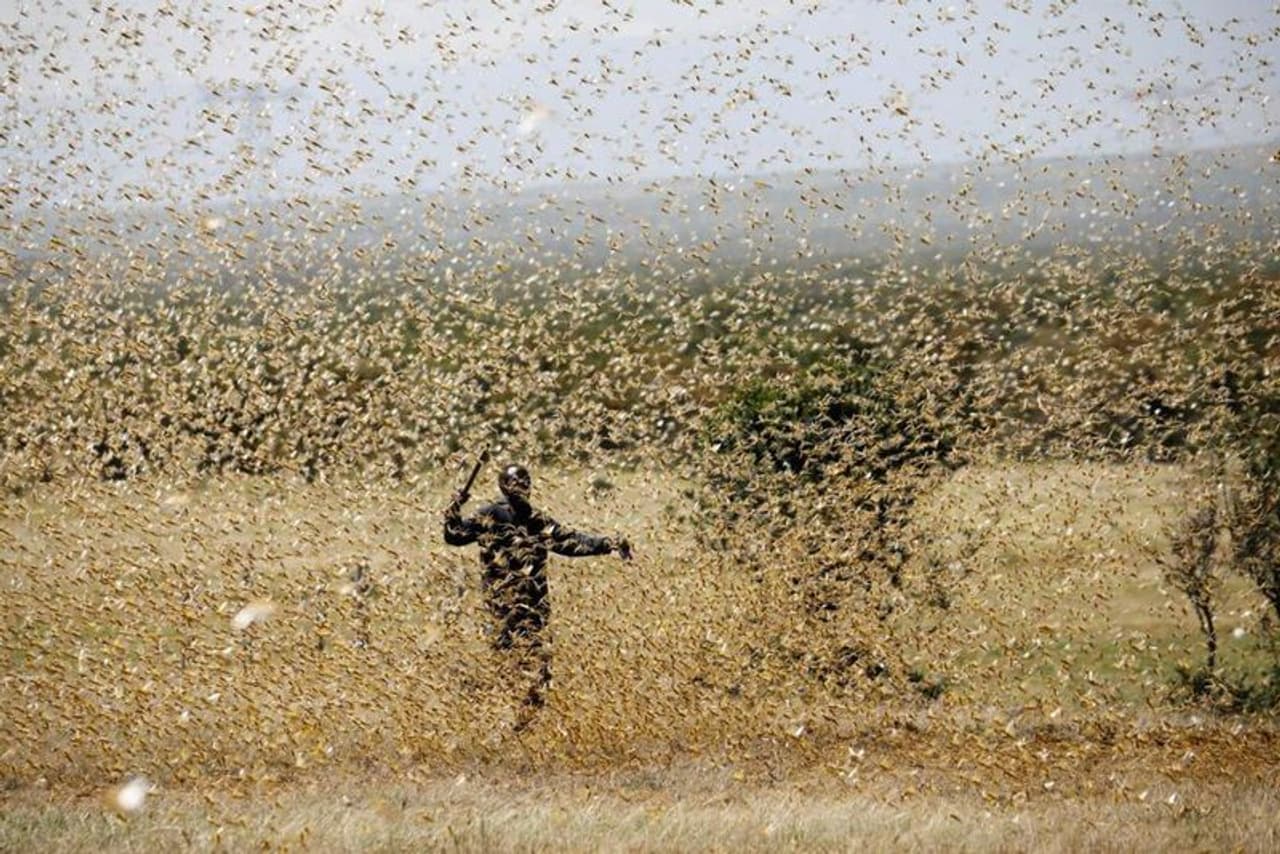
Picture Credit: reutersmedia
Locust Monitoring Organisations
Several organisations around the world monitor the threat from locusts. They provide forecasts detailing regions likely to suffer from locust plagues in the near future. Further actions are by locust control agencies belonging to each country concerned. The Food and Agriculture Organisation (FAO) of the United Nations also monitors the situation. In February 2020, in an effort to end massive locust outbreaks, India decided to use drones and special equipment to monitor locusts and spray insecticides.
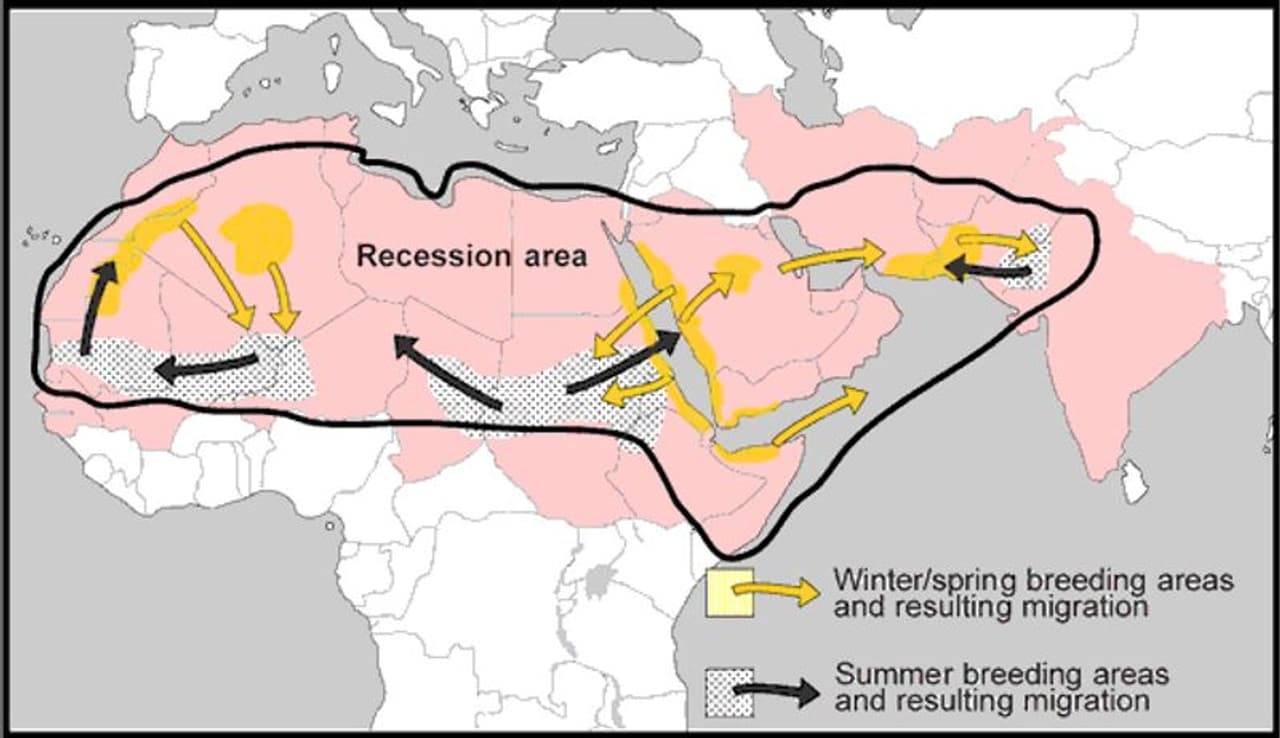
Image Credit: FAO
Climate Change and COVID Impact
According to the government of India’s Locust Warning Organisation (LWO), the attack this year is highly irregular as it has come earlier than usual and reached farther. “This time the locusts have come in May. That almost never happens. Maybe they got a more fertile breeding ground this season,” said KL Gurjar, deputy director at the directorate of plant protection, quarantine and storage. The favourable conditions were made available to the locusts in the desert region of Africa and Arabian Peninsula due to heavy rainfall that the region witnessed in 2019. They then migrated to India via Iran and Pakistan. Every year during December to March-April, an average of 4–6 weather western disturbances (WD) reach India per month. This year there have been higher than usual number of WDs. Climate change may well have played a role. The real damage, however, is being caused and will be caused in rural India where farmers already bearing the brunt of the COVID-19 induced lockdown and the low prices they have fetched in the last few years, stare at massive crop damage that the locust swarms are capable of inflicting.
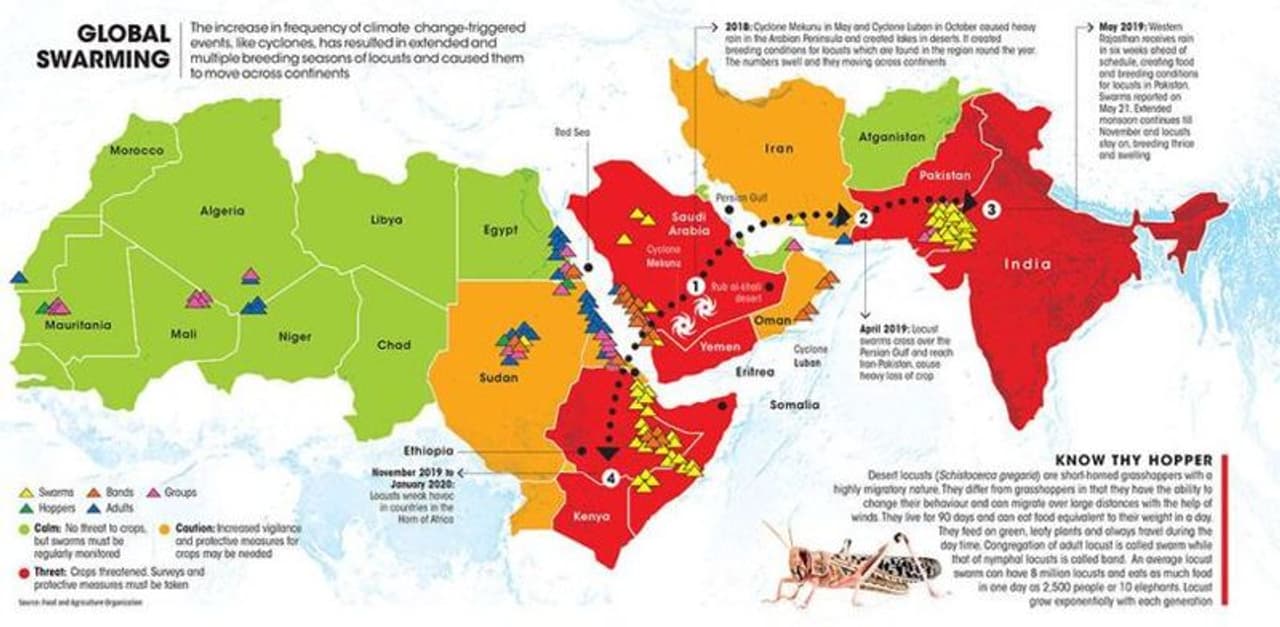
Image Credit: dailyhunt.in
Natural Locust Control – Bird and Animal Feed
Back in 1879, an unnamed writer noted that the most effective controls were natural ones: crows, mynahs, starlings, storks, bustards, vultures and other birds all congregated to feast on locusts. Even the quadruped world of mongooses, wolves, jackals, even pariahs (dogs), and colonies of field mice burrowing in the sandy soil all feast on the locusts. Even camels, sheep and cattle were seen eating the insects. Even humans as well.
Machine and Technology for Control
Efforts are being made to disrupt the development of the insects by cultivating the soil where eggs are laid, collecting hoppers with catching machines, killing them with flamethrowers, trapping them in ditches, and crushing them with rollers and other mechanical methods. There are effective insecticides, but some of them are banned in most countries because of its effect on the food chain. Spraying concentrated insecticide solutions from aircraft over the insects or the vegetation on which they feed is most preferred. Other modern technologies used for planning locust control include GPS, GIS tools, and satellite imagery. The ultimate goal in locust control is the use of preventive and proactive methods that disrupt the environment to the least possible extent.
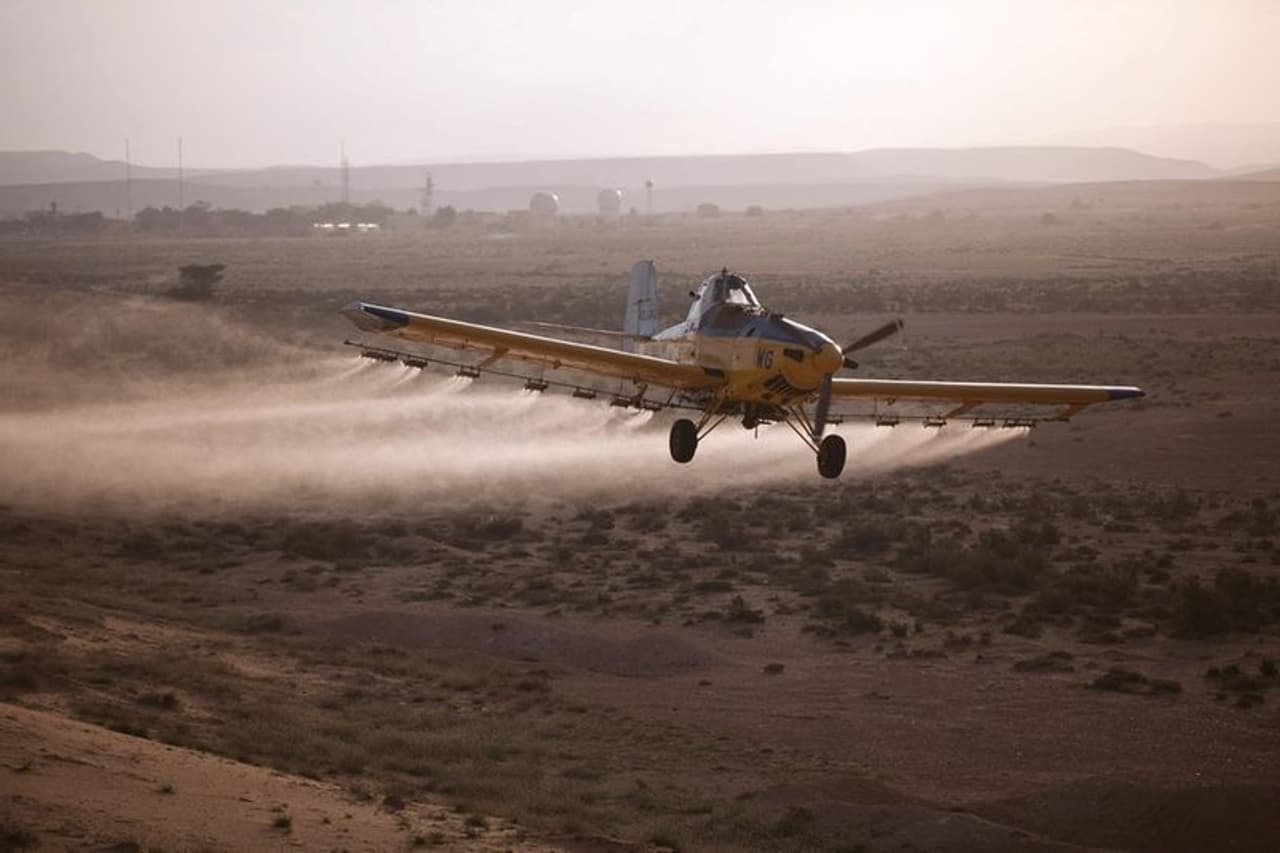
Picture Credit: thenational.ae
India Pakistan Locust Coordination
So far, the insects have been sighted in 41 of India’s 739 districts, said KL Gurjar, the deputy director of the Locust Warning Organisation under the Ministry of Agriculture. The swarms entered India have been spring breeding in Iran, and parts of Pakistan. It was crucial for these countries to coordinate their efforts with their neighbours India and Afghanistan. Officials from both Indian and Pakistan hold weekly Skype meetings to take stock of the situation. Because of the rising political tensions between India and Pakistan, such coordination has not been easy, according to Gurjar. Pakistan has told India that they are taking measures to control the locust spread through aerial sprayers. Details of covering the spread in the infected area are also shared from their side.

For representational purposes (File Photo | AFP)
India’s Response Against Locust
India’s response so far to the locust invasion has been restricted to spraying of pesticides through vehicle-mounted sprayers, states notifying locust invasion as “mid-season adversity” under the Pradhan Mantri Fasal Bima Yojana (PMFBY) and announcing disaster relief packages. In remote desert areas, tractors can’t move across sand dunes or reach out to the height of certain trees, rendering the spraying ineffective. The government has cleared the use of drones or aircraft to spray Malathion over locust swarms.
Aircraft Bird Strikes
A bird aircraft strike or ingestion (for an engine), is a collision between an airborne animal (usually a bird or bat) and a man made vehicle, usually an aircraft. The term is also used for bird deaths resulting from collisions with structures such as power lines, towers and wind turbines. Bird strikes are a significant threat to flight safety and have caused a number of accidents with human casualties. There are over 13,000 bird strikes annually in the US alone. However, the number of major accidents involving civil aircraft is quite low and it has been estimated that there is only about 1 accident resulting in human death in one billion flying hours. The majority of bird strikes (65%) cause little damage to the aircraft, however the collision is usually fatal to the bird(s) involved. Particularly, the Canadian goose has been ranked as the third most hazardous wildlife species to aircraft with approximately 240 goose-aircraft collisions in the United States each year. 80% of all bird strikes go unreported.
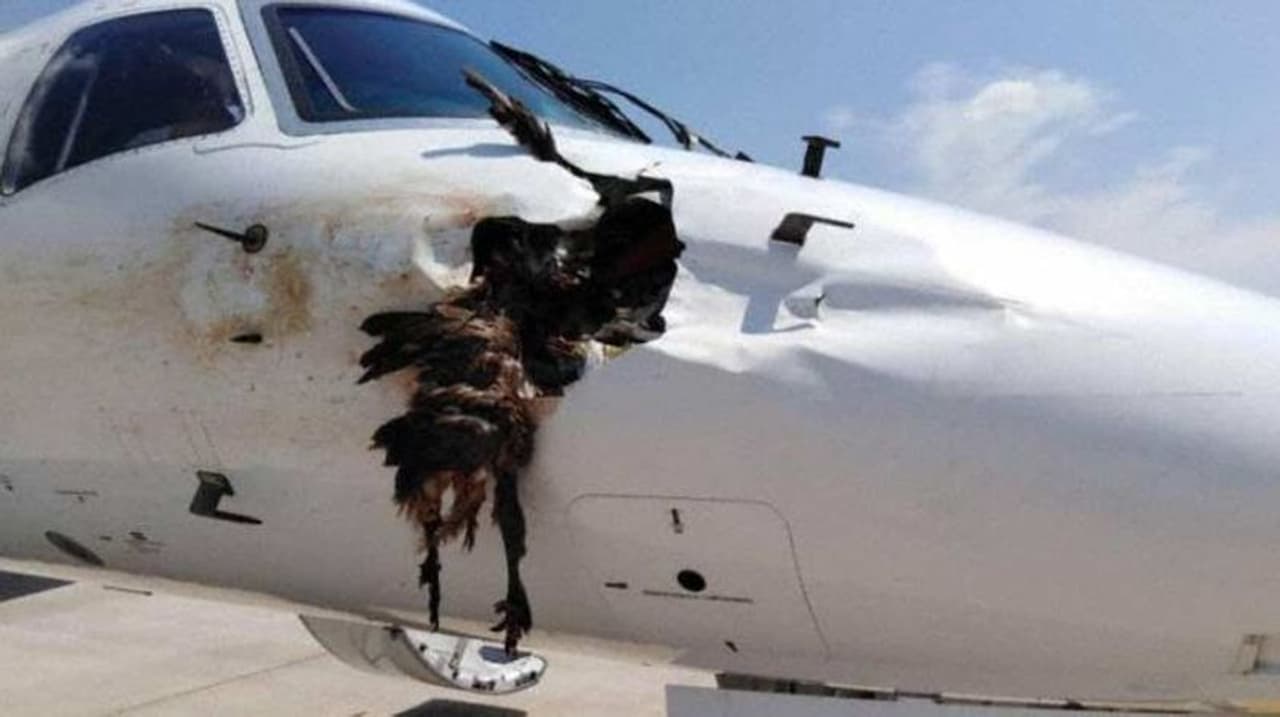
South African Airlink Embraer E135 Experiences Bird Strike.
Picture Credit: aviationvoice.com
Most accidents occur when a bird (or birds) collides with the windscreen or is sucked into the engine of jet aircraft. These annual damages have been estimated at $400 million within the United States alone and up to $1.2 billion to commercial aircraft worldwide. The International Civil Aviation Organisation (ICAO) received 65,139 bird strike reports for 2011–14, and the Federal Aviation Authority (FAA) counted 177,269 wildlife strike reports on civil aircraft between 1990 and 2015, growing 38% in seven years from 2009 to 2015. Birds accounted for 97%.
US Airways flight 1549 ditched into the Hudson river
Picture Credit: britannica.com
The recent well publicised bird strike took place on January 15, 2009, when the US Airways flight 1549 from LaGuardia airport ditched into the Hudson river after experiencing a loss of both engines. The engine failure was reportedly caused by running into a flock of geese at an altitude of about 975 m, shortly after takeoff. All 150 passengers and 5 crew members were safely evacuated after a successful ditching of the aircraft in water.
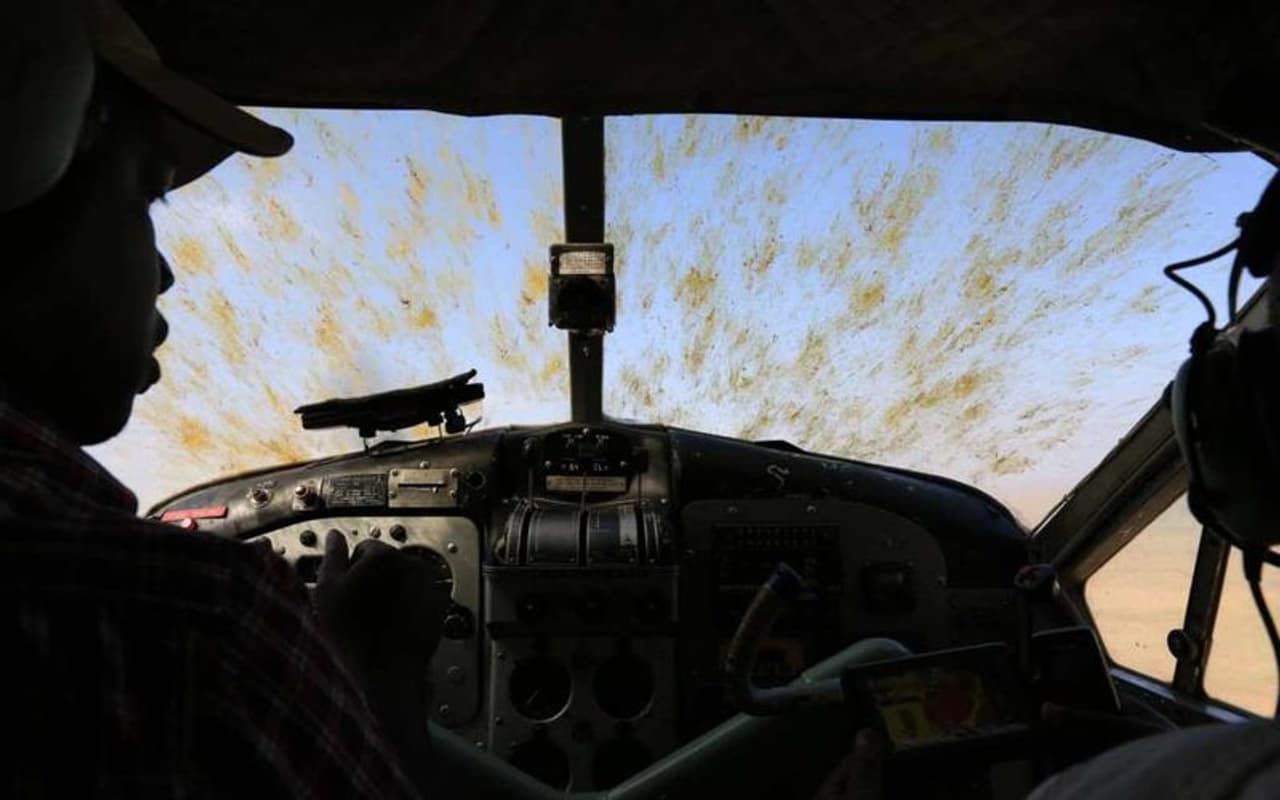
Picture Source: telegraph.co.uk
Locust Hits on Aircraft
In January 2020, an Ethiopian Airlines jet was forced to divert to Addis Ababa Airport and make an emergency landing after it flew into a swarm of locusts and millions of locusts slammed into the plane’s engines, windshield and nose. The pilots tried to clean the windscreen with wipers but in vain, and hence decided to land in Addis Ababa instead. Indian Air Force fighter aircraft have often spotted and in some cases flown through locust swarms while carrying out low-level exercises in the Rajasthan desert. A six aircraft Jaguar strike formation airborne from Jodhpur was flying at low-level in 1993 in Rajasthan sector. The author was flying as an air defence escort in a Mirage 2000. The entire formation flew through a locust swarm. The strike leader immediately ordered a “pull-up”. All aircraft went through the swarm and got multiple locust hits. All aircraft had heavily stained windscreens and pilots found it difficult to see the runway for landing. There was no ILS. Immediately after the formation landed, the airbase was hit by the same locust swarm and the runway and taxiways were fully covered with dead locusts. All aircraft were made to go through detailed inspection. The engine inlets, the radar domes, the wing and fin leading edges had blood marks. All engines had to be inspected. One Jaguar engine had to be withdrawn for detailed checks. 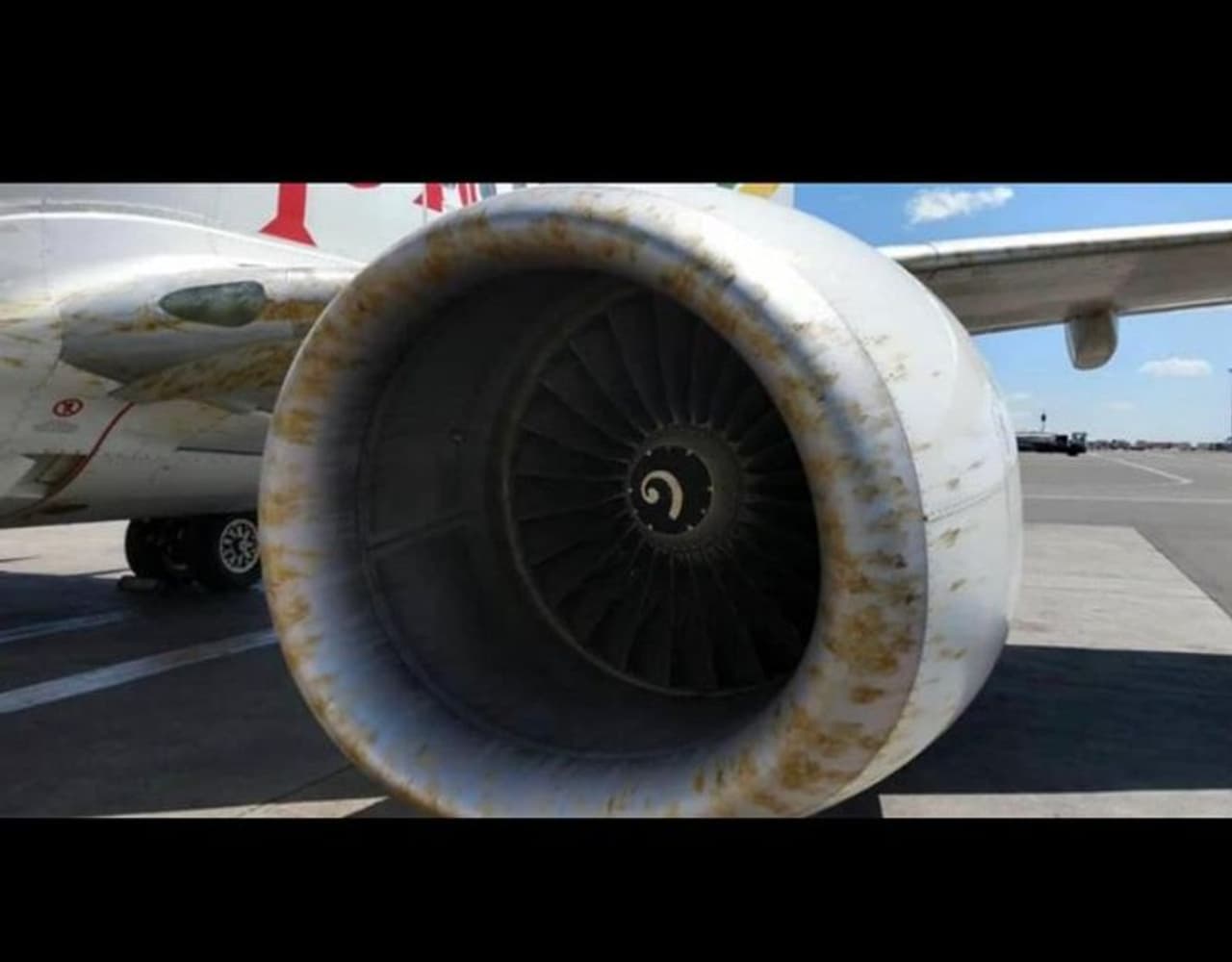
Picture Source: Twitter
Threat to Civil Aircraft and DGCA Circular
Directorate General of Civil Aviation (DGCA) says locusts are a threat to aircraft and have issued guidelines for flight safety. Generally, locusts are found at lower levels and therefore pose a threat to aircraft in the critical landing and take-off phase of the flight. According to the circular, flying through a swarm can cause problems for aircraft at the time of landing and takeoff with all the air inlets of an aircraft, including engines, air conditioning packs, etc, prone to being damaged by the insects. They have strongly advised flights to avoid flying through any known locust swarms. All pilots are also required to share information of locust swarm location if they have sighted any during the flight, so that others can be advised to avoid those areas.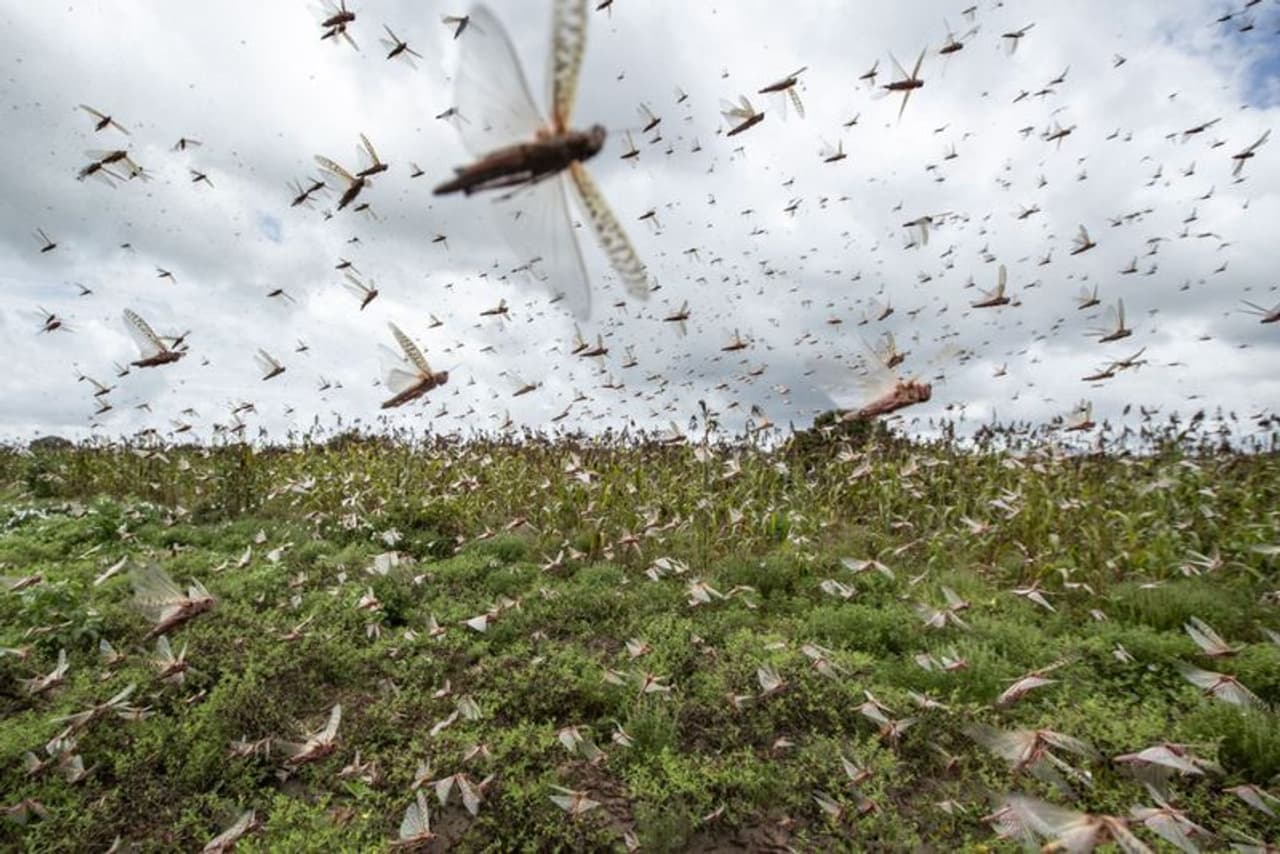
Swarms of desert locusts fly up into the air from crops in Katitika village, Kitui county, Kenya Jan. 24, 2020. (AP Photo/Ben Curtis)
Locust can be hazardous to an aircraft’s systems even when it is parked. Furthermore, flying through locust swarms could also cause the plane’s windshield to be covered with the insects, reducing a pilot’s forward visibility during landing in a visual approach. Use of wipers at times may cause the smear to spread even more. Pilots should consider this aspect prior to opting to use wipers to remove locusts from the windshield, the circular said. Other instruments of an aircraft such as pitot tubes can also be affected by locusts, even when the planes are parked. This can lead to erroneous airspeed and altitude readings for the aircraft’s flight computer, causing it to misbehave. After a flight through a locust swarm, appropriate entries are to be made in the pilot’s defect log, giving details of any malfunction experienced and the engineering crew should conduct checks as mandated prior to release of the aircraft for next flight, the DGCA circular noted. Ground handling agencies should be aware that locust swarms pose risk to parked aircraft, where possible air inlets and probes should be covered.
Picture Credit: khaleejtimes.com
(Air Marshal Anil Chopra, (Retd), is an IAF test pilot, who commanded a Mirage 2000 Squadron and operational airbases in both Western and Eastern sectors. He is also the founder of Air Power Asia)
